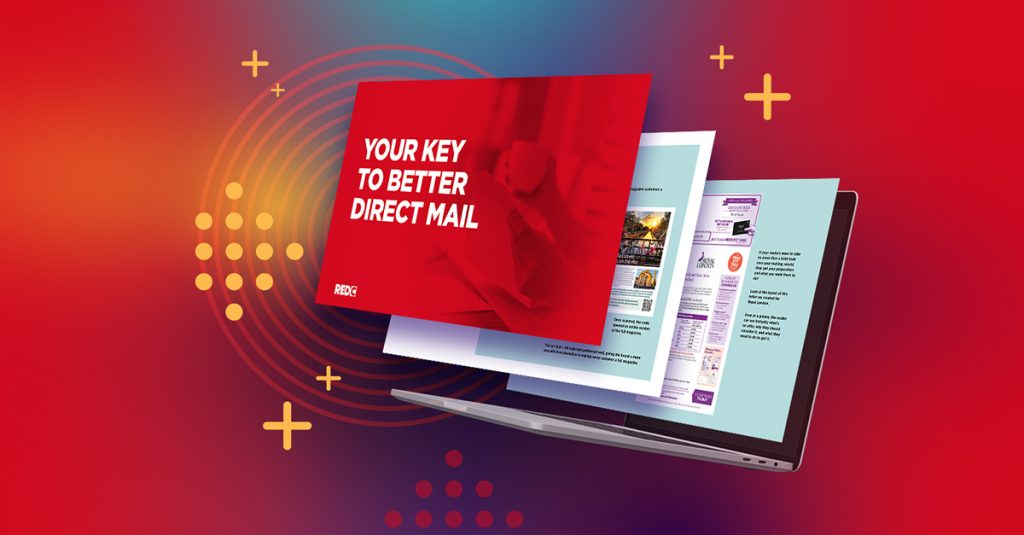In an era dominated by digital advertising, direct mail, once considered old-fashioned, has quietly staged a remarkable comeback. Over the past few years, savvy marketers in both B2B and B2C sectors have rediscovered the unique power of direct mail campaigns to cut through digital noise, reach target audiences effectively, and create lasting impressions that drive results.
But what’s fuelling this resurgence? The answer lies in two major forces: digital fatigue and the enduring tactile power of print. As inboxes overflow and online ads fade into white noise, direct mail offers something rare in today’s hyper-digital world. A physical, personalised experience that demands attention and drives action.
The Digital Noise Dilemma
We live in a world of overexposure. The average person encounters anywhere from 4,000 to 10,000 ads per day, most of them digital. From push notifications and social media ads to email marketing and programmatic display, it’s easy for even the most well-crafted digital campaign to go unnoticed.
Email Overload
Email, once a marketer’s go-to channel, is now struggling with oversaturation. Average open rates hover between 15–25%, and click-through rates often fall below 3%. Many messages are filtered into promotions tabs or junk folders, never even seen by recipients.
Ad Blindness
Consumers have developed “banner blindness”—a phenomenon where they consciously or subconsciously ignore display ads. As a result, digital ads are becoming increasingly less effective at capturing attention and generating meaningful engagement.
Direct Mail Cuts Through the Clutter
Unlike digital channels, direct mail is tangible. A postcard, catalogue, dimensional package, or handwritten letter creates a physical moment between brand and consumer. An experience that digital cannot replicate.
Direct Mail Gets Noticed
According to the Data & Marketing Association (DMA), direct mail can achieve open rates up to 90%, significantly higher than even the best email campaigns. People are naturally curious about physical mail, and a well-designed piece can capture attention instantly.
Longevity Matters
One of direct mail’s biggest advantages is its shelf life. While emails may be deleted within seconds or never opened at all, a physical mailer can linger. A Royal Mail study found that direct mail stays in homes for an average of 17 days, providing repeated exposure.
This extended lifespan increases engagement, recall, and conversions. People may pin a postcard to the fridge, leave a brochure on the coffee table, or revisit a letter multiple times before taking action.
Direct Mail Appeals to All Generations
A common misconception is that direct mail only resonates with older demographics. In reality, millennials and Gen Z, despite growing up in a digital-first environment, often find physical mail novel, trustworthy, and engaging.
A USPS study revealed that 84% of millennials read the mail they receive, making them more likely to engage with print than older digital-native campaigns. Why? Physical mail stands out, feels personal, and provides a break from screens.

Why Even Digital-First Brands Use Direct Mail
Some of the world’s most digitally native companies are embracing print as part of their marketing mix:
1. Google
Google sends printed promotions offering Google Ads credits to small business owners. These mailers are personalized based on business profiles, demonstrating that even tech giants recognize the effectiveness of physical mail.
2. Amazon
Amazon uses curated, holiday-themed catalogues for its most active customers. These high-quality mailers engage households, especially kids, creating a shopping experience that online pages alone cannot replicate.
3. Uber
Uber employs postcards with promo codes and location-based offers to drive new rider sign-ups. These physical touches complement digital campaigns and help activate users in key cities.
4. Airbnb
Airbnb has experimented with luxury print mailers promoting Airbnb Experiences and high-end listings. These coffee-table-quality pieces are designed to linger, building brand perception and enhancing credibility.
B2B Brands Are Rediscovering Direct Mail
Direct mail isn’t just for consumer-focused companies. In the B2B world, where decision-makers are overwhelmed with digital outreach, print campaigns are helping brands stand out.
High-Impact Touchpoints
In long enterprise sales cycles involving multiple stakeholders, a memorable piece of direct mail can break the ice, reinforce relationships, or re-engage dormant leads.
- Dimensional mailers, such as boxes with gifts, books, or branded items, can increase response rates by 300% or more in B2B campaigns.
- Companies like Salesforce, HubSpot, and Adobe have integrated direct mail into account-based marketing (ABM) strategies to strengthen engagement.
Better Attribution and ROI
Modern direct mail technology allows for measurable campaigns through:
- QR codes
- PURLs (personalized URLs)
- Advanced tracking systems
The DMA reports that direct mail delivers an average ROI of 29%, comparable to social media and higher than paid search.
The Psychology Behind Direct Mail’s Resurgence
1. Physical = Credible
In an era of phishing emails and AI-generated spam, physical communications feel legitimate and trustworthy. A tangible mailer signals authenticity.
2. Touch Drives Emotion
Neuromarketing research shows that physical media triggers stronger emotional responses and deeper memory encoding than digital. Holding a mailer activates parts of the brain associated with value and engagement, making the message more memorable.
3. Personalization Feels Authentic
Digital personalisation can feel intrusive (think retargeting ads), whereas direct mail personalisation, like a name on an envelope or a custom message, feels thoughtful and genuine.
Integrating Direct Mail into Omnichannel Marketing
Savvy marketers aren’t choosing between digital and print, they combine both to create cohesive, multi-touch campaigns that reinforce brand messaging.
Examples of Integration:
- Abandoned Cart Recovery: Send a postcard or letter with a discount code after an online cart abandonment.
- Event Invitations: Use print invitations for webinars, conferences, or product launches, followed by email and social follow-ups.
- Reactivation Campaigns: Target dormant subscribers or customers with physical mailers to reignite interest
Conclusion: Direct Mail Is Thriving
In today’s overcrowded digital ecosystem, direct mail provides focus, trust, and tactile engagement that digital channels struggle to deliver.
Whether you’re a B2B company trying to break through to high-value prospects or a DTC brand looking to stand out in a competitive market, direct mail deserves a place in your marketing strategy.
As more digital-first companies embrace the power of print, one thing is clear: direct mail is not just surviving, it’s thriving.
The next time you plan a marketing campaign, don’t just think clicks, think mailboxes.

comments